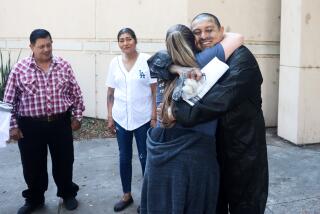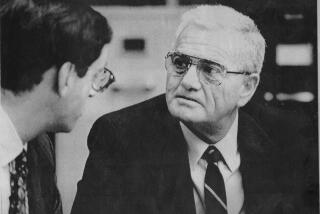THE O.J. SIMPSON MURDER TRIAL
UCLA law professor Peter Arenella and Loyola University law professor Laurie Levenson offer their take on the Simpson trial. Joining them is Southwestern law professor Karen Smith, who will rotate with other experts as the case moves forward. Today’s topic: How pristine a crime scene?
PETER ARENELLA
On the prosecution: The prosecution effectively used Officer Riske to show that special care was taken by the first officer at the murder scene to avoid touching or moving any physical evidence. Marcia Clark used his testimony to rebut any suggestion that these were homicides connected to some burglary, since the inside of the condo was undisturbed. Through Riske, she also undermined any defense attempt to suggest there were two gloves.
On the defense: In Johnnie Cochran’s hands, a pristine crime scene was transformed into one that was carelessly handled. Cochran established that several of the officers did not wear protective covering on their shoes or gloves on their hands. He used prosecution photographs to demonstrate that two key pieces of evidence were moved. Finally, the time of death might turn not on the plaintive wail of a dog, but on the melting time of ice cream.
LAURIE LEVENSON
On the prosecution: The prosecution set the tone with graphic photographs of the victims. They were the type of photos where the jury will want to hold somebody responsible for these crimes. The officer’s testimony was so straightforward and he was so willing to admit his owns mistakes that he seemed credible. And he helped the prosecution by establishing that there were so many other officers around that it’s unlikely Detective Mark Fuhrman could snatch away a bloody glove.
On the defense: The defense jumped at the chance to use its cross-examination of a junior patrolman to point out all of the alleged mistakes made in handling the crime scene. He did not wear booties or gloves. He used the victim’s phone. He did not take pictures inside the condo or of blood on the gate, and he admitted that evidence was moved. Now, the prosecution must explain why and when that evidence was moved. They also must square half-melted ice cream with the timing of the murder.
KAREN SMITH
On the prosecution: I think that Marcia Clark may have gotten in trouble by anticipating where she thought the defense was heading, which is something she’s done throughout the trial. The officer’s candid answer about his lack of training in crime-scene preservation played into the defense’s hands. She did an excellent job of asking logical questions that allowed the jurors to visualize how the witness experienced the scene.
On the defense: By demonstrating the apparent movement of the envelope from one position to another, Cochran was able to drive home the point that the evidence was moved. When Officer Riske testified that the ice cream was melting, as opposed to melted, he created an opening the defense could use to plant seeds of doubt in the jury’s minds that the deaths occurred closer to 11 p.m. than 10 p.m.
Compiled by TIM RUTTEN / Los Angeles Times
More to Read
Sign up for Essential California
The most important California stories and recommendations in your inbox every morning.
You may occasionally receive promotional content from the Los Angeles Times.










